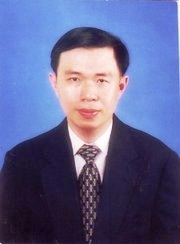Home > Press > Using fluidized bed reactor for phenolic wasterwater treatment
 |
| Dr. Pratarn Wongsarivej |
Abstract:
A group of researchers from Thailand investigated the combined effect of adsorption and oxidation for phenolic wastewater treatment using a three phase fluidized bed reactor. The group continuously fed aqueous solutions containing phenol and ozone into a reactor resulting in a comparison of seven cases.
Using fluidized bed reactor for phenolic wasterwater treatment
Pathumthani, Thailand | Posted on November 7th, 2011According to Pratarn Wongsarivej, a researcher at National Nanotechnology Center, NANOTEC, "Phenol plays an important role in industrial processes as starter material. However, it is also known to be carcinogenic and possesses high stability and toxicity. It can damage skin and tissues of human and animals. It can damage the skin and tissues of human and animals. When digested, phenol-containing liquid can affect the liver, causing dark urine and irregular heartbeat. Therefore, the treatment of phenolic wastewater is of importance to environmental protection." The degradation of aqueous phenol by simultaneously use of ozone and activtade carbon or zeolite offers an environmental alternative phenol treatment.
Collaborators on this investigation included Chulalongkorn University and King Mongkut University of Technology Thonburi. The researchers reported their investigation in a paper published by Chinese Journal of Chemical Engineering.
####
For more information, please click here
Contacts:
Ramjitti Indaraprasirt
Manager
International Relations Section
NANOTEC
02-564-7100 ext: 6617
Copyright © NANOTEC
If you have a comment, please Contact us.Issuers of news releases, not 7th Wave, Inc. or Nanotechnology Now, are solely responsible for the accuracy of the content.
| Related News Press |
News and information
![]() Researchers develop molecular qubits that communicate at telecom frequencies October 3rd, 2025
Researchers develop molecular qubits that communicate at telecom frequencies October 3rd, 2025
![]() Next-generation quantum communication October 3rd, 2025
Next-generation quantum communication October 3rd, 2025
![]() "Nanoreactor" cage uses visible light for catalytic and ultra-selective cross-cycloadditions October 3rd, 2025
"Nanoreactor" cage uses visible light for catalytic and ultra-selective cross-cycloadditions October 3rd, 2025
Announcements
![]() Rice membrane extracts lithium from brines with greater speed, less waste October 3rd, 2025
Rice membrane extracts lithium from brines with greater speed, less waste October 3rd, 2025
![]() Researchers develop molecular qubits that communicate at telecom frequencies October 3rd, 2025
Researchers develop molecular qubits that communicate at telecom frequencies October 3rd, 2025
![]() Next-generation quantum communication October 3rd, 2025
Next-generation quantum communication October 3rd, 2025
![]() "Nanoreactor" cage uses visible light for catalytic and ultra-selective cross-cycloadditions October 3rd, 2025
"Nanoreactor" cage uses visible light for catalytic and ultra-selective cross-cycloadditions October 3rd, 2025
Environment
![]() Researchers unveil a groundbreaking clay-based solution to capture carbon dioxide and combat climate change June 6th, 2025
Researchers unveil a groundbreaking clay-based solution to capture carbon dioxide and combat climate change June 6th, 2025
![]() Onion-like nanoparticles found in aircraft exhaust May 14th, 2025
Onion-like nanoparticles found in aircraft exhaust May 14th, 2025
![]() SMART researchers pioneer first-of-its-kind nanosensor for real-time iron detection in plants February 28th, 2025
SMART researchers pioneer first-of-its-kind nanosensor for real-time iron detection in plants February 28th, 2025
Water
![]() Taking salt out of the water equation October 7th, 2022
Taking salt out of the water equation October 7th, 2022
|
|
||
|
|
||
| The latest news from around the world, FREE | ||
|
|
||
|
|
||
| Premium Products | ||
|
|
||
|
Only the news you want to read!
Learn More |
||
|
|
||
|
Full-service, expert consulting
Learn More |
||
|
|
||








